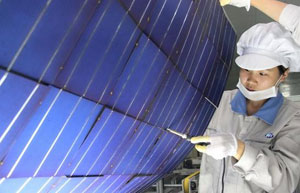BEIJING - China's international balance of payments is expected to fluctuate in the second half of this year due to more flexible currency exchange, domestic economic recovery and international economic conditions, according to the country's top foreign exchange regulator.
There are many uncertain and unstable factors for the second half of this year, both in China and outside the country, the State Administration of Foreign Exchange (SAFE) said in its first-half report.
China's international balance of payments showed a surplus in the first half of the year, with the surplus under the current account reaching $80.5 billion, according to the SAFE.
In the second half, surplus in trade and other real economy-related investment is forecast to continue to stay at "a certain level" thanks to an improving global economy and demand, the introduction of policies to support exports, growing confidence in the domestic market and the relatively high interest rates for the Chinese currency, said the report.
On the other hand, trans-border capital flows are expected to experience fluctuations in the second half of this year due to the more flexible exchange rates of the yuan, uncertain domestic economic recovery, possible increasing expectations for the Federal Reserve to raise interest rates, and unstable economic situations in Japan and Europe, it said.
The goods trade surplus reached $149.3 billion and the net inflow of direct investment and securities investment stood at $93 billion and $36.9 billion, the SAFE data showed on Monday.
The SAFE suggested all market participants should be more accustomed to and stay alert to possible fluctuations in trans-border capital flows.
 |
 |
| China reports H1 surplus in int'l balance of payments | Trade agreements should not be political |
